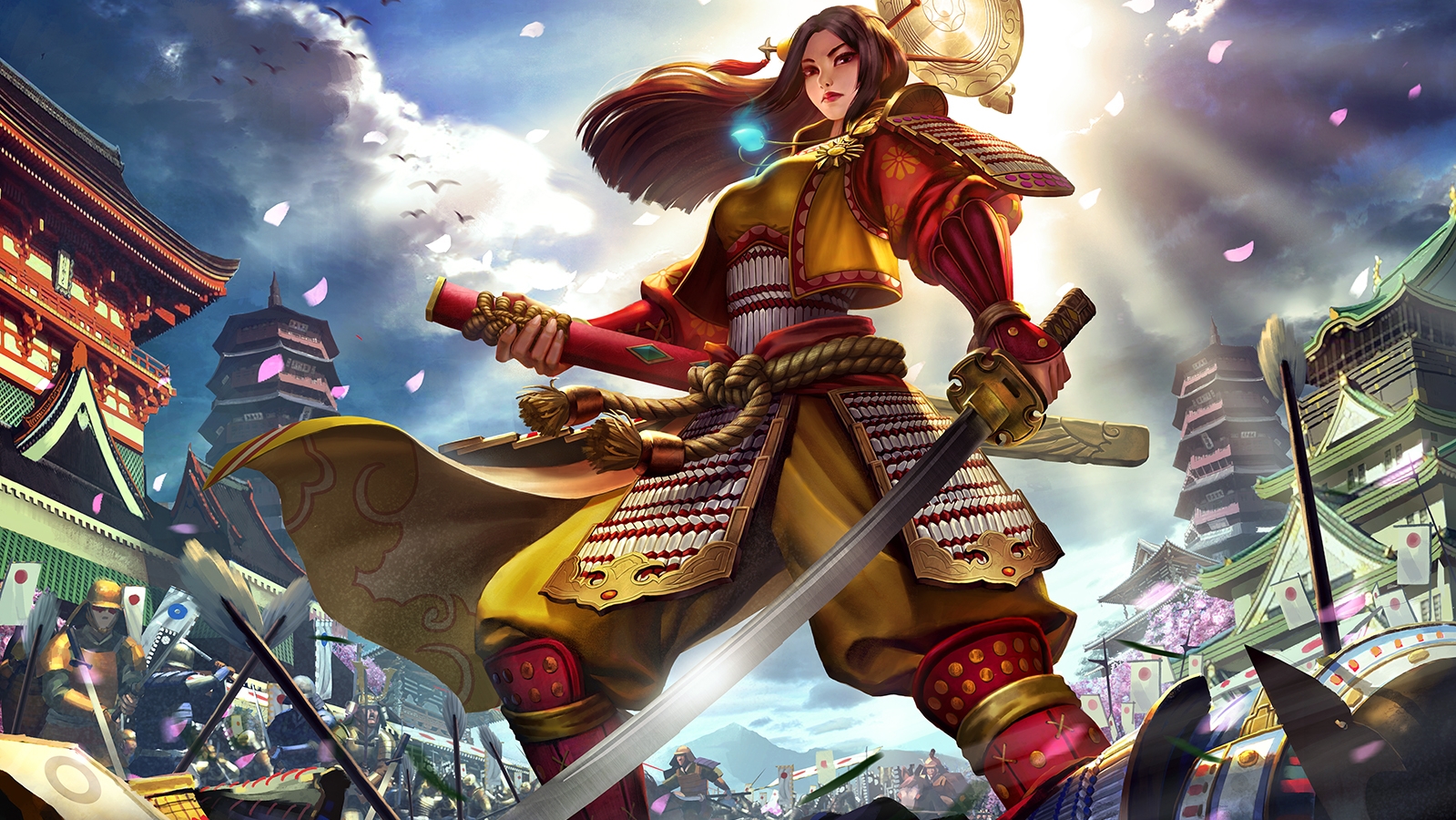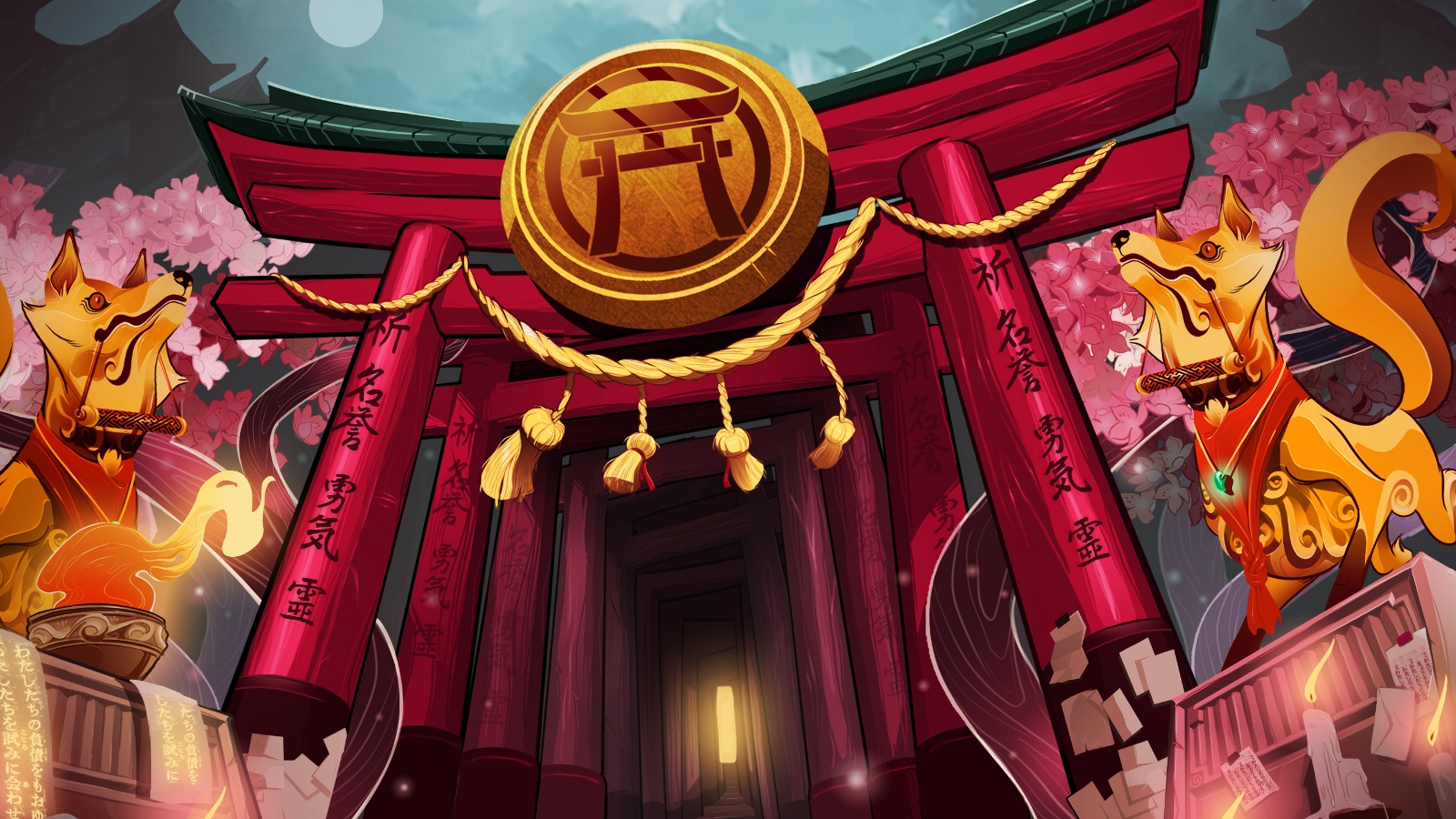Smite season 3: Japanese gods herald huge changes

On the eve of the Smite World Championship 2016, I visited Hi-Rez Studios for an early look at the upcoming season 3 changes, which will start to come into effect from Monday next week—immediately after this weekend’s main event comes to a close.
A challenger appears
The standout addition to Smite is the game’s first new pantheon in several years. Starting with the sun goddess Amaterasu, Shinto deities will be making their way into the Smite on an ongoing basis. This is clearly news to you and the entire Smite community, and not something that has been steadily leaking out of Hi-Rez over the past weeks and months. Let’s all look surprised!
Nonetheless, she’s a beautifully-designed character: Hi-Rez have come a long way from their weaker earlier work (hi Neith). Her look incorporates key items from mythology, including Amaterasu’s necklace and mirror, and detailed swordplay animations have been created with a sensitive eye for accuracy.
She’s a Warrior and a solo laner with an emphasis on teamfight utility. Her passive marks enemies she hits on the map, and a second hit applies a debuff that causes Amaterasu’s teammates to do more damage to the target. All of her abilities have both a defensive and offensive mode. She has a dash which applies a cleanse to allies that she passes through, an aura that can be toggled between offensive and defensive bonuses, and an active tanking power that buffs her damage based on the amount of damage she absorbs. Her ultimate is a three-hit combo, ending in a stun—essentially a revamp of Guan Yu’s ultimate from the Smite beta.
Amaterasu will be available in game from January 12th, and her arrival will also herald the beginning of the ‘Rising Dawn’ event, a ‘mini-Odyssey’ with Japanese-themed skins for lots of existing heroes—including an awesome-looking Kaiju look for Sobek.
Box of trinkets
While Hi-Rez aren’t going into much detail about the specifics of season 3’s balance changes, they did reveal that a lot of work is going into a revamp of the itemisation system. Active items are getting the most substantial rework—apparently, the majority of players don’t even buy them (here’s to you, everybody who has ever tried to persuade their arena team to buy beads.)
From season 3 onwards, active items will now be called ‘trinkets’. And they’ll be free. And there’ll only be one level for each one, which will sit somewhere between the level 2 and level 3 versions of each current active item. You’ll receive one free trinket at the start of every game, and you’ll have the option to pick up a second one later on as you level up. You’ll have a choice of trinkets, naturally, but there’ll be obvious picks for each character.
The biggest gaming news, reviews and hardware deals
Keep up to date with the most important stories and the best deals, as picked by the PC Gamer team.
This is a buff and a nerf all in one, forcing actives into the hands of players who wouldn’t previously buy them while also reducing their overall effectiveness in the lategame. To account for this, other changes to items and gods will be made—particularly with regard to crowd control duration. Hi-Rez are quiet on the precise details at the moment, however.
More broadly, the patch will focus on creating more pronounced power curves for gods, establishing a sense of early, middle and late-game power and encouraging teams to strategise around those ideas.

What ails you
In the name of clarity, a standardised system is being implemented to make it much easier to tell which status effects have been applied to your character at any given time. Stuns, silences, disarms and so on will now have single, consistent icons and much clearer representation in the game UI.
Welcome (back) to the jungle (again)
The Conquest mode jungle is getting another rework, with new pathways—particularly around midlane—and a new speed camp, which is described as ‘very exciting’. Expect more information later in the event.
Quests and matchmaking
Daily rewards are dead, replaced by Heroes of the Storm-style daily quests that you can hold onto and complete at leisure. These comprise things like ‘win three games as a Mage’ or ‘win five games as a Norse god’, and you can complete them in any mode you like—Hi-Rez want to avoid splitting the community up or forcing specific playstyles, but are equally interested in encouraging players to leave their comfort zones from time to time. Gems will be awarded for certain quests, meaning you no longer need to worry about missing a day of log-in rewards if you want to get the best free stuff.
They’re also taking another pass at ranked, which will include a soft MMR reset. The old master league is going away, replaced by a new ‘grandmaster’ system. Places will be reserved for the top 100 players in any given region, and Hi-Rez expect positions to shift constantly—it won’t be enough to get into the top bracket and stay there, you’ll have to work constantly to avoid slipping back down into diamond. The hope is that this more dynamic system will create a more accurate sense of who the best players are at any given time.
Ranked Joust, at last!
The new Chinese Joust map is a major season 3 addition, of course, but as Wes has already played and written about it I figure I’ll move on to the day’s fresher news: Joust is coming to ranked. You’ll be able to bring in your premades and compete properly at this level, which is great news for anybody who, like me, tends to find it easier to pull together groups for 3v3 rather than 5v5. It’ll use the same pick and ban system as ranked Conquest at first, but his may change over the course of testing.
Hi-Rez aim to deliver all of these season 3 changes by February 2nd, and there’ll be multiple bouts of PTS testing starting after SWC 2016. Expect more info as the main event progresses.

PC Gamer Pro is dedicated to esports and competitive gaming. Check back every day for exciting, fun and informative articles about League of Legends, Dota 2, Hearthstone, CS:GO and more. GL HF!
Joining in 2011, Chris made his start with PC Gamer turning beautiful trees into magazines, first as a writer and later as deputy editor. Once PCG's reluctant MMO champion , his discovery of Dota 2 in 2012 led him to much darker, stranger places. In 2015, Chris became the editor of PC Gamer Pro, overseeing our online coverage of competitive gaming and esports. He left in 2017, and can be now found making games and recording the Crate & Crowbar podcast.


